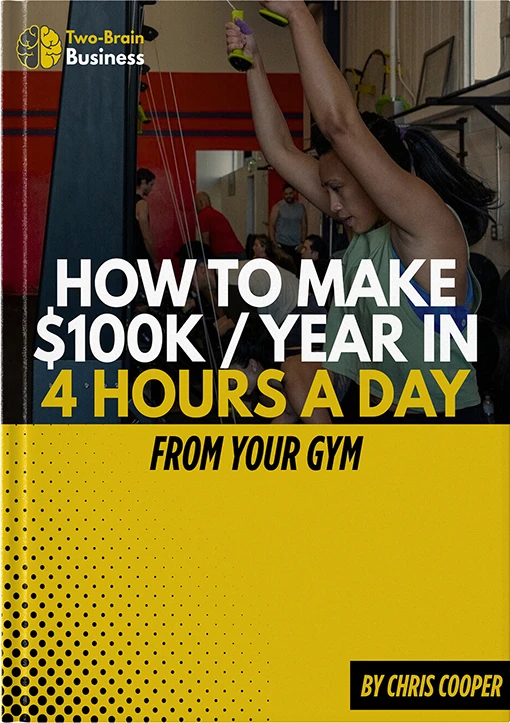Here’s an immature sales process that’s costing gyms clients:
“What do you want to accomplish in the gym?”
“Lose 10 lb.”
“OK. I recommend personal training. Want to sign up?”
The basics of our Prescriptive Model are in there—which is good. The gym owner is asking for the client’s goal and recommending the best solution. But something is missing.
It’s the “why,” and if you can dig it out of prospective clients, you’re going to close way more high-value sales.
Ask More Questions!
In the “discovery phase” of sales, you’re acquiring valuable info. You don’t want to make any assumptions.
Good salespeople clarify the statements of prospective clients. They probe, follow up and learn the whole story.
What brought the person in? Why today? How long has the problem been a problem? Have they tried anything in the past? Why were previous efforts unsuccessful? And so on.
In the discovery phase, you must learn about the problem, you must understand the desired future state, and you must create urgency that prompts action.
Urgency has two parts. Urgency comes when a person understands the cost of inaction—when you show the gap between the goal and the current situation. Urgency also appears when a person accepts responsibility for the problem and thinks, “Nobody’s going to save me, and nobody’s going to do this for me. I must take action.”
When there’s urgency, a person is ready for a pitch—your solution. And you’ll get less hesitation because urgency tends to overwhelm objections.
The depth of your questions creates that urgency. If you stay surface level, you get surface-level answers—and more objections.
Going Deep in Sales
Good salespeople discover the goal and offer a prescription to accomplish it.
Great salespeople find out the true source of pain, create emotional investment and urgency, and then prescribe a solution that’s received with fewer objections, if any.
Compare this exchange to the one above:
Client: “I just wanna lose like 20 pounds.”
Salesperson: “Okay, got it. 20 pounds. And how long have you been wanting to lose the 20 pounds?”
Client: “I had a kid about a year ago, my second. And then life’s been busy. It’s very difficult being a mom and balancing work and my relationship. And so it’s something that I’ve wanted to do for a long time now. I just need something to get me back on the wagon.”
Salesperson: “When you say ‘long time,’ you said that you had a kid a year ago—did this desire to lose the 20 pounds start before then?”
Client: “Well, I was pregnant, so it wasn’t realistic to lose weight at that point in time. But, yeah, it’s been a while. I want to have my old body back. My pre-pregnancy body is my goal. I want to fit my old outfits.”
Salesperson: “Got it. And so what have you been doing to work on losing the 20 pounds?”
Client: “Honestly, I haven’t been doing much. I know it’s been something I’ve needed to change, but I’ve been kicking it down the road because I’ve been putting the needs of others before my own needs. I’m a mom—that’s what I do.”
Salesperson: “Got it. And has something happened recently that made you show up today to have a conversation about finally putting something in place to change that?”
Client: “One kid is starting school in two months.”
Salesperson: “That’s good to know. So it sounds like you have a little bit more freedom of time with the oldest one going off to school. So you’re trying to prioritize yourself to start to lose this weight?”
Client: “I just have a little breathing room, and I can get out of the house for an hour a couple times a week. Before, that just wasn’t even a consideration.”
Salesperson: “OK. When you said that you wanted to lose some weight, you said 20 pounds, and it seemed like that was specific. What’s the significance behind 20?”
Client: “That would just put me at what my pre-pregnancy weight was.”
Salesperson: “OK. And were you happy at that weight?”
Client: “Definitely happier. I just felt a lot more confident, a lot younger, like I had more energy.”
Salesperson: “OK. So is that the ultimate goal or do you think that you would want to do something beyond that once you hit the first 20?”
Client: “I think I’d have to get there first, but you always wanna look better. There’s no end state in these things. I do think getting to my pre-pregnancy weight would give me a lot more confidence and give me a better feeling when I look in the mirror.”
Salesperson: “Got it. You mentioned that you kicked the can down the road to get to this point that we’re at today. I’m curious: What happens if you don’t do anything today?”
Client: “I just keep going. I could be talking to you next year having to lose 30 pounds instead of 20.”
Salesperson: “And what is that gonna do for your quality of life?
Client: “It’s certainly not gonna improve it.”
Salesperson: “And is that something that you’re prepared to settle for?”
Client: “No, I know something needs to change. This isn’t something I can do on my own. There’s too much I have to keep track of—my husband, my two children, work. I just don’t have the head space to think about how to get back to where I was.”
Salesperson: “OK. And when you say ‘something needs to change,’ do you have an idea of what that looks like for you?”
Client: “I think just moving, getting to the gym and starting to take time for myself is really gonna be that first step in the process.”
Salesperson: “Got it!”
If you present a detailed, personalized prescription now, you’re going to have a much easier close. You’ve created urgency: The prospective client has taken responsibility for change and stated the cost of inaction.
You’ve also got a clear gap between the current state and the goal; now you provide the bridge. You’ve asked a ton of questions and can present every aspect of the plan as part of a solution provided by a true pro. You’ve moved from “generic fitness stuff” to “I’m an expert, and if I consider your unique situation, I know you should do exactly this to accomplish that.”
Even better, a lot of objections have been dealt with already, and you have info that will help you deal with others if they pop up.
The process wasn’t pushy or slimy, and it only took a couple of minutes.
Dig for Detail
If you settle for surface responses and skip the details, you might not get the opportunity to change the person’s life. And that’s really what it’s all about: helping people achieve their health and fitness goals through coaching.
So do you care enough to ask more questions and lead the conversation?
I hope you said “yes,” because if you didn’t, prospective clients aren’t going to want you to lead them toward fitness and health on a daily basis.
In the next post in this series, I’ll teach you how to close.

